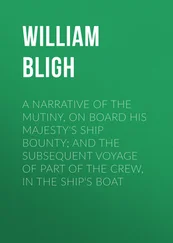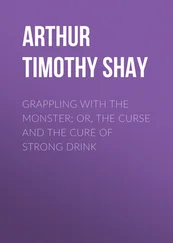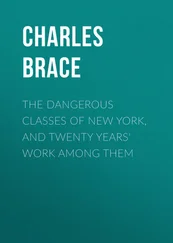Mattias Berg - The Carrier
Здесь есть возможность читать онлайн «Mattias Berg - The Carrier» весь текст электронной книги совершенно бесплатно (целиком полную версию без сокращений). В некоторых случаях можно слушать аудио, скачать через торрент в формате fb2 и присутствует краткое содержание. Город: London, Год выпуска: 2019, ISBN: 2019, Издательство: MacLehose Press, Жанр: Триллер, на английском языке. Описание произведения, (предисловие) а так же отзывы посетителей доступны на портале библиотеки ЛибКат.
- Название:The Carrier
- Автор:
- Издательство:MacLehose Press
- Жанр:
- Год:2019
- Город:London
- ISBN:978-0-85705-788-4
- Рейтинг книги:4 / 5. Голосов: 1
-
Избранное:Добавить в избранное
- Отзывы:
-
Ваша оценка:
- 80
- 1
- 2
- 3
- 4
- 5
The Carrier: краткое содержание, описание и аннотация
Предлагаем к чтению аннотацию, описание, краткое содержание или предисловие (зависит от того, что написал сам автор книги «The Carrier»). Если вы не нашли необходимую информацию о книге — напишите в комментариях, мы постараемся отыскать её.
The Carrier — читать онлайн бесплатно полную книгу (весь текст) целиком
Ниже представлен текст книги, разбитый по страницам. Система сохранения места последней прочитанной страницы, позволяет с удобством читать онлайн бесплатно книгу «The Carrier», без необходимости каждый раз заново искать на чём Вы остановились. Поставьте закладку, и сможете в любой момент перейти на страницу, на которой закончили чтение.
Интервал:
Закладка:
“We transported a lot of plutonium here, and also uranium, which at the time was collectively known as ‘atomic ash’. Every little trace of our early experiments within the program. And in due course other sorts of things—the residue from our Second and Third Tier development work. Using the same transport route as when we moved the mining engineers and blasting specialists from here in Kiruna to Ursvik, at night-time over a number of years. All those who built the Inner Circle.”
We had learned to interpret all imaginable signs, whatever information was available at any given moment. So when Ingrid broke off in order to take three crunch cookies out of her combat pack and drink three mouthfuls of liquid—which made me and Jesús María do the same thing—she simultaneously gave away the fact that we would not be staying here for very long. A few days at most, hardly a week, since we were consuming so much of our provisions in one go. Then we would in all likelihood return to some sort of civilization, at least for a short while to get real nourishment into our bodies.
“Almost no-one had the faintest idea about any of this,” she went on. “Not even our most senior commanders, politicians, ministers. It was entirely my idea: nobody else should have to take responsibility for this, come Judgment Day. When I was sucked into the program at the beginning of the ’60s—still a teenager, fresh and clear, like a mountain lake—I read Sir Claude Gibbs’ theories on how best to store nuclear waste. According to him, old coal mines, which one should then cement shut, would be safer than the bottom of the North Sea.”
Ingrid finished off her third crunch cookie, for once showing signs of needing food and liquid. Jesús María and I did the same.
“And I had after all recently been sitting in the hut up there and literally felt in my body how the open-cast mining finished and the work penetrated deeper and deeper into the bed-rock. So I thought the atomic ash could slowly but surely be covered by the debris falling down from the higher levels, all this granite and magnetite. If, that is, we were able to blast open a secret connection sideways into the lowest part of the workings: synchronizing our efforts with the work of establishing the new main level at a quarter of a mile down. And everything went to plan. We imagined that this would eventually become a really big storage space for the waste from the program. Not only plutonium and uranium, but also for everything else we would have to hide. For the whole of ‘Lise Meitner’s secret’.”
Her choice of words made me start.
“But the story took another turn, of course, as so often happens. After October 1968, for certain reasons, no more waste was freighted up here. The others involved were all much older than us, began to die off, and there was nothing recorded on paper. So Pluto became as forgotten as Pompeii had been for a thousand years, until the archaeologists started to dig it up. In the end even Sixten stopped coming here once a year to measure the values.”
Ingrid got up and led us through a long tunnel toward the red steel door. On the wall before it were gauges for humidity and the radiation level. They looked as if they had stopped functioning decades earlier.
“It’s lying in there, still: the dragon’s treasure. We began with the waste which already existed—the product of Meitner and Sigvard Eklund’s very first experiments in the mid-’50s, which officially came from experimental reactor R.1 under Kungliga Tekniska Högskolan in Stockholm. Mostly metallic uranium sealed up in aluminum, and unfortunately the aluminum turned out to react on contact with water. Then we simply filled in with what we ourselves produced. Layer upon layer, year after year, in this top secret chamber beneath the gigantic volumes of debris from the construction of the new base level.”
We returned to the rest area and Ingrid stretched out on a sofa while Jesús María and I sat opposite her. Her voice was just as engaging, even in that position. I closed my eyes and listened. Could not help but enjoy her fairy tales.
“And we really did manage to pull it off. It wasn’t until 2007, when Nya Ursvik was to be developed and the last of the radioactive material had to be removed from there, that the so-called ‘historic waste’ began to receive any attention in the Swedish media. Then Greenpeace received a tip-off and had the good fortune to find the truck on the E4 motorway.”
I opened my eyes again, saw that Jesús María was about to say something—and then held back so as to listen to more.
“But the very last of the waste from our Swedish nuclear weapons program was sent away to the States as late as last year, on March 27. Just over six and a half pounds of weapons-grade plutonium, nearly twenty pounds of naturally depleted uranium and a few other things in a top secret maneuver which had been planned for decades. As professional as if I’d done it myself—as indeed I had. But now from the other side of the Atlantic.”
Ingrid seemed to hesitate before she went on. Swallowed heavily.
“In any case… with the question of the waste having been raised in the media, in 2007 Sixten came up here for the first time in years to measure the levels: was reminded that everything was still lying in here. And what he discovered was that the situation was not as serious as he had feared—rather it was a good deal worse. The waste from the later phases of the program turned out to be more toxic than we could ever have imagined. In addition, the radioactivity had spread far out into the ground-water.”
Ingrid took another few deep drafts of liquid, cleared her throat.
“Yet we had a stroke of luck. The mine is of course owned by L.K.A.B., which in turn is owned by the Swedish state, so the connection between the nuclear weapons program and the mine could be hushed up. The vital part of Kiruna did have to be moved. But we could also bundle up our nuclear waste issue within the gigantic process which goes under the heading of “City Transformation”.
At last Jesús María reacted.
“You mean all of that crap, Bettan’s fucking tears because the hotel is having to close after being run by three generations of the same family, the fact that the town hall has to be blown all to hell, is just fake? That this is about plutonium and shit—and not the iron ore in the mountain!”
“That’s not what I’m saying, Jesús María. I don’t think anyone of woman born can work out exactly what’s what anymore. These processes have for so long been wrapped up in each other, like concentric circles, boxes within boxes.”
Ingrid took a Geiger counter out of her combat pack, our latest model, hardly bigger than a matchbox. It rattled more than ticked. Like a rattlesnake.
“So I promised Sixten to make an assessment of the radiation, since we were in this neck of the woods anyway. And as you can probably tell from your Geiger counter, we ought not to stay in here for long. I should say exactly thirty-nine minutes… until he finally comes.”
I stole a glance at my watch, which of course showed 23.21. Thirty-nine minutes until midnight: the constant chronological symbolism. Then I asked the question, even though I knew the mussel might snap shut for ever.
“You talk about your Second and Third Tier development work… Can you tell us more about it, Ingrid?”
“The short answer is ‘No’, my treasure, and we haven’t got time for the longer answer. But I can say that our dreams of an atom bomb were only the beginning. The very first circle of hell.”
3.11
When I woke up—and felt to see if the security strap of the briefcase was still lying over my wrist—Jesús María was sitting close to Ingrid on the sofa opposite. The sweetish smell and the stubs on the ’70s oval teak table revealed their tale: Jesús María had already smoked too much. Ingrid looked pale and worn.
Читать дальшеИнтервал:
Закладка:
Похожие книги на «The Carrier»
Представляем Вашему вниманию похожие книги на «The Carrier» списком для выбора. Мы отобрали схожую по названию и смыслу литературу в надежде предоставить читателям больше вариантов отыскать новые, интересные, ещё непрочитанные произведения.
Обсуждение, отзывы о книге «The Carrier» и просто собственные мнения читателей. Оставьте ваши комментарии, напишите, что Вы думаете о произведении, его смысле или главных героях. Укажите что конкретно понравилось, а что нет, и почему Вы так считаете.












